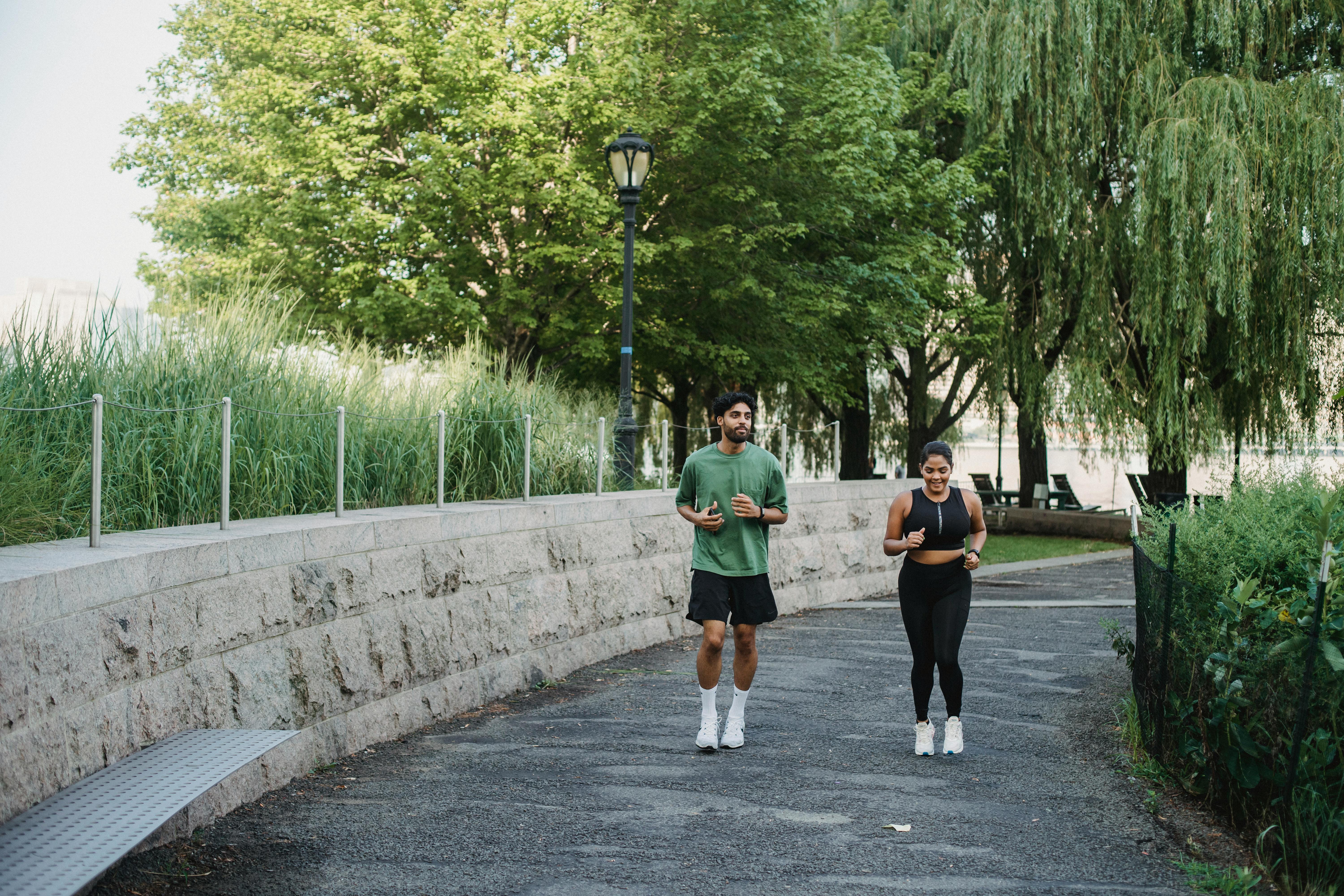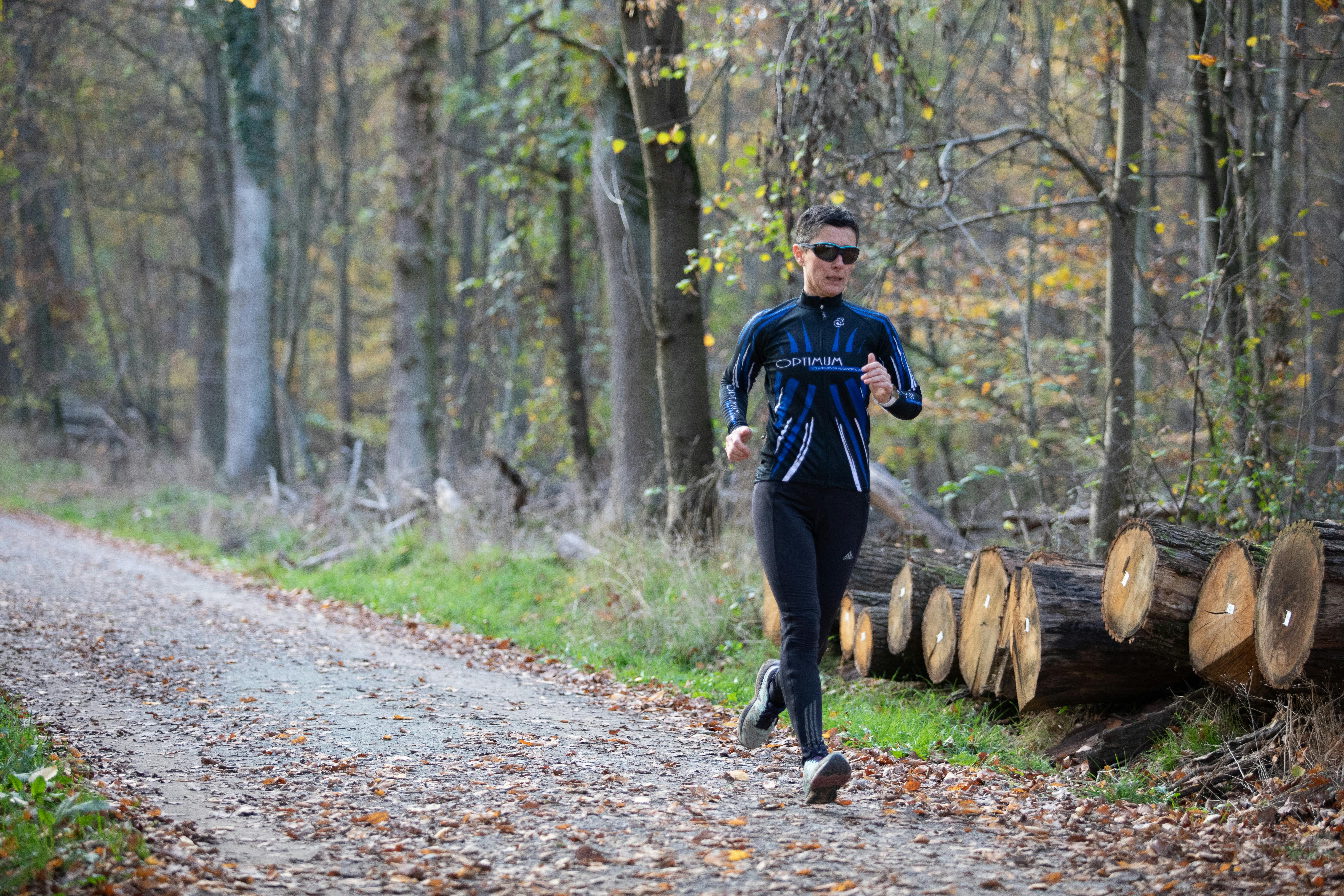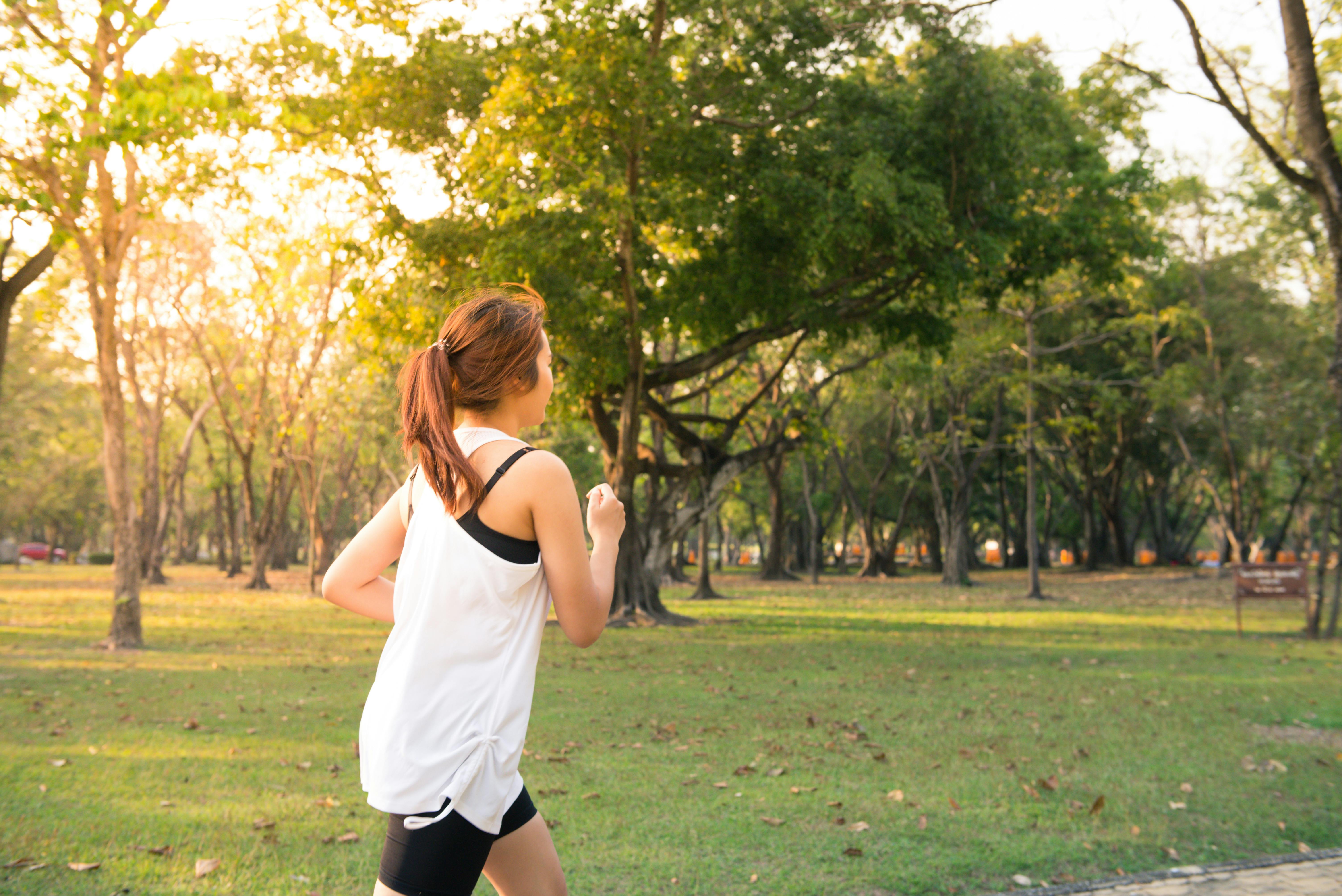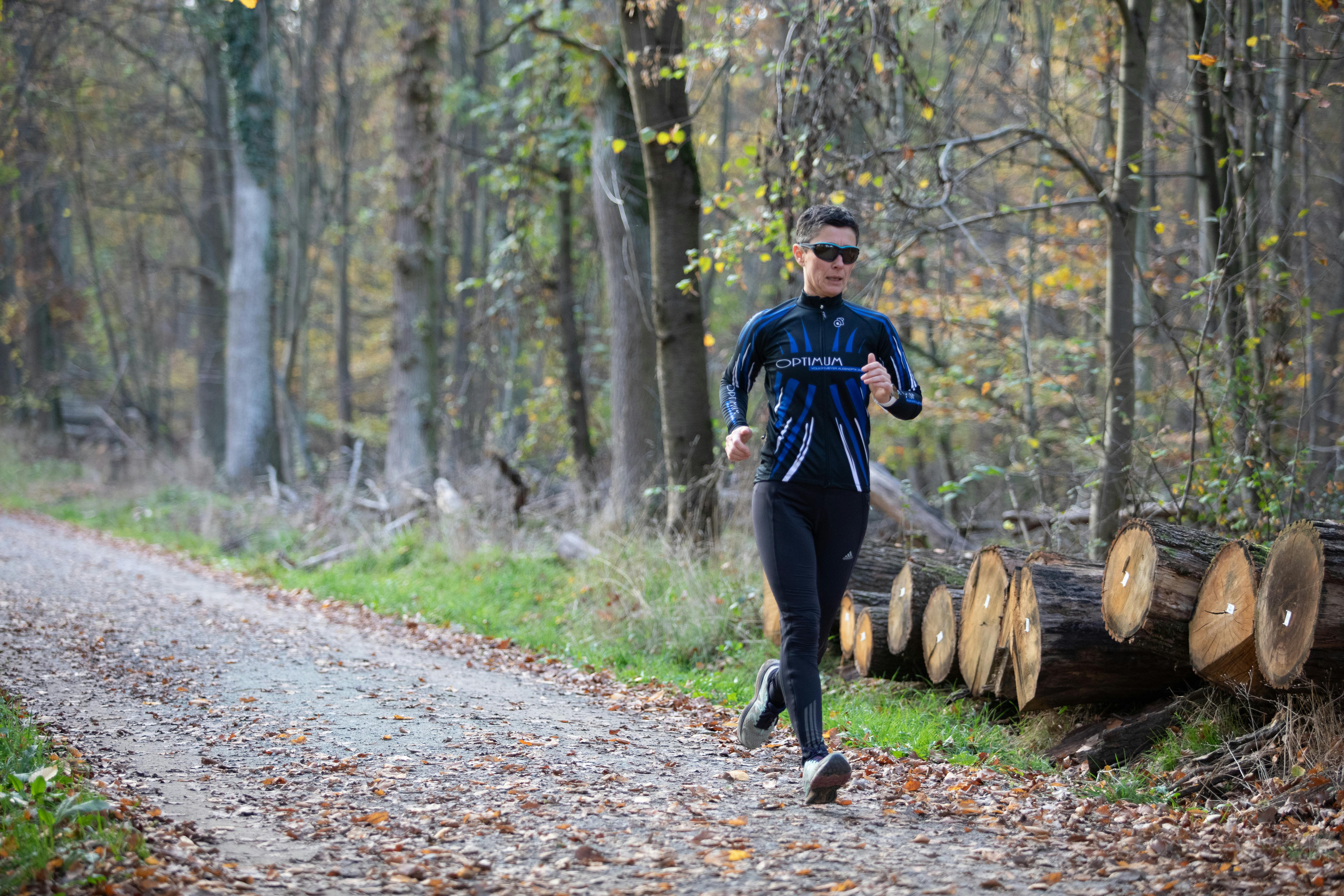7 Running Tips for Beginners in 2024 - What I wish I knew from the beginning
In this article:
-
Choosing the Right Gear
-
When and What to Eat
-
Mix the Surface
-
Running Apps
-
Pace and Motivation
-
Join a Running Club
-
Frequently Asked Questions

Running is one of those exercises that simultaneously sounds ridiculously easy, and challenging all at the same time, especially when you’re first starting out. I’ve been running for more than 3 years now and only in the past couple of months have I felt like I’ve finally unlocked the key to a successful run.
Choosing the right gear
First, let’s talk about gear, The truth is gear is subjective and it might take a bit of experimenting to figure out what works for you including the gear. That being said, the two pieces of gear that I wish I had from the very beginning are a good pair of running shoes and a flipbelt. - they are crucial!
Shoes
Shoes, like feet, come in all different shapes and sizes. Some are built for a high arch, some are built for trails, some are built to mimic the barefoot, you name it. There’s a variation of running shoes for it. Therefore, shoes that work for me might not work for you and vice versa.
But that being said, there are a couple of things to keep in mind when you; 're picking out shoes if you are going to be running in it: Can you wiggle your toes? You should be able to. Is your foot snug? It should be, but not too tight. Do you overpronate or underpronate when you run? If you’re not sure about how your feet actually move when you run, I highly suggest going to a specialty running store near you to get fitted for a shoe. It might cost a little bit more, but there they can stick you on a treadmill and actually record how you run and then they can stick you in a shoe that’s personalized for you and your feet.
Flipbelt
Let's talk about the flipbelt - Before I had this thing I would struggle to find a place for all the things that I carry when I run. Granted, I don’t really carry a lot, but things like my keys, my ID, and phone, are things that I like to keep with me even when I run and armbands were often too small for my phone, way overpriced, and usually didn't even have a spot for my keys.
Workout clothes very often don't come with pockets (wtf sports industry?) After doing a bit of research, I came across the flipbelt, which I ordered almost instantly. It’s a belt that you wear when you exercise, that has snug pouches all the way through it. The pouches are big enough for my phone, snug enough to keep my ID and other cards in place and even have a clasp to hang my keys on as I run. It doesn't slide up my body as I run, even with my current 10-inch difference between my waist and hips, and I’ve never lost an item to date, knock on wood.
When and what to eat
The second thing I wish I knew when I first started running is actually about food. It took me forever to figure out what and when to eat before I went on a run Should I eat a big meal? Should I eat a snack? Should I eat anything at all? When should I eat? etc. The truth is, like gear, it's kind of subjective. For me personally, I find that two things work really well for me. The first is a short, fasted run first thing in the morning, If I am running without eating anything I generally can’t go for a very long time, and it pretty much has to be right when I wake up, otherwise, I get extremely lightheaded and nauseous. But after a fast run in the morning, I’ve actually found that I have quite a bit of energy, and it makes me feel extremely productive and ready to take on the day. The second thing I found that works really well for me is having a light, carb-rich snack somewhere between 30 and 60 minutes before a run. Usually, for me, this means a banana or an apple or something of that variety. I found that a light snack gives me a good amount of energy to power through cardio, but it doesn’t make me feel sick or heavy like a large meal would.
Mix the Surface
The third thing I wish I had known when I first started running is actually about the running surface.To maintain consistency in your running routine, I strongly advise you to vary the surfaces you run on. Pavement or sidewalks are excellent for faster running, but they constitute a rather hard surface, subjecting your joints to a significant impact with each run. On the other hand, off-road running can be more forgiving on the joints, although it comes with an increased risk of rolling an ankle, among other potential hazards. Then there's the treadmill – great for year-round running regardless of weather conditions, although it can feel quite different from running outdoors. My advice is to mix it up for variety if nothing else.

Running apps
The fourth thing I wish I had known when I first started running was what apps to use. As a beginner, all of the apps that are available for you to use can be really overwhelming, and it's difficult to figure out which exactly you will actually end up using. For me personally, there are four apps that I use frequently that I wish I had from the very beginning.
Runtastic
The first is called Runtastic. Truth is Runtastic is one of the millions of tracking apps that tell you your pace and gives you a map of where you have gone, gives you audio cues to let you know how many miles or kilometers you have done, how many calories you have burned, and so on and so forth. I really enjoy this simple easy-to easy-to-understand interface.
Couch to 5k
The second is Couch to 5k. - If you want to start running when you have absolutely no running background, this app is for you. this app essentially takes you through intervals of jogging and walking to slowly build up your endurance over the course of a couple of weeks. It’s very easy to use, very simple to understand, and it’s a godsend if you’re just starting out.
Zombies Run!
The third is Zombies Run! - a unique app that is basically an interactive podcast that you listen to as you run. The premise behind it is that there’s a zombie apocalypse that is occurring and you’re one of the runners for a small township that is trying to stay protected from the horde, and you have to collect virtual items for the township as you run. Basically, you’re running from zombies. It’s a fun app that turns running into a real-life game that you’re trying to win instead of a chore that you have to do.
Strava
The fourth is Strava. - Strava is the biggest app for athletes - you can track all kinds of activities :) It's like a large social media platform for athletes. You can follow your friends, and see where they run, how far, and how fast. You can track your own runs, upload photos, write posts, and do many other things :)

Pace and Motivation
The last two things I wish I knew when I was first starting out running kind of go hand in hand, and they are pace and motivation. When you are starting out running for the first time, it’s really easy to jump the gun and start running at an above-average pace, especially when you might not be familiar with what your own personal average pace is. But after a couple of blocks, if you’re running too fast, you will feel that burn in your lungs, your heart racing in an uncomfortable way, and it will feel impossible to catch your breath. Then you will slow down, stop, try to breathe,e and feel so frustrated with yourself and defeated because you thought you were stronger than that. If I could go back and tell myself one thing it would be to slow down take notice of how fast you're moving when you’re walking a brisk walk, and how easy it is to hold a conversation. Very slowly, increase your pace to the lightest of jogs get comfortable with your body moving at that pace. Your body needs time to get used to these new stresses and strains of running. Breathe, instead of trying to go at a lightning-fast pace, try focusing on how far you can go instead.
And the hardest part about running isn’t even your leg giving out, or the sweat pouring down your face, or your earbud popping out in the middle of it all. It's your body telling you to stop and that it’s too hard. My trick around this is to tell myself “Oh, I will just take a break at the end of this song, and when the song ends, I will tell myself, if I can make it to that light pole up ahead, and then when I get there, “O, let's just get around the corner of this block first and then we will take a break.” The truth is, my body always tells me I can’t do it, and every time I try my hardest to tell it that it's wrong, Sometimes it doesn't work and that's okay too. At the end of the day when I finish my run, no matter how far I went or how it goes. I feel proud of myself because at least I proved that I could get up and move.
Join a Running Club
My bonus tip is something I wish I had done much sooner, is joining my local running club. While running alone is beneficial and I recommend continuing, the advantages of running with others can be tremendous.
There are days when mustering the motivation to step out and go for a run can be challenging. Joining a group provides that extra push – the accountability of meeting others for a run can be a powerful motivator. Moreover, being part of a friendly group of runners offers invaluable support and encouragement as you progress in your running journey.

Frequently Asked Questions
Why is it better to run slow to improve your running?
Running slow is better for improving running skills because it facilitates aerobic development, strengthens the cardiovascular system, enhances endurance, and optimizes oxygen delivery to muscles, forming a crucial foundation for long-distance running success.
What about warming up and cooling down?
Warming up before running increases blood flow, enhances flexibility, and mentally prepares for the activity, while cooling down promotes recovery, prevents muscle soreness, and aids in the removal of metabolic byproducts, contributing to overall well-being and reducing the risk of injuries. Integrating both into a running routine optimizes performance and supports long-term running success.
Can I run every day as a beginner?
As a beginner runner, it's advisable to avoid running every day to prevent overuse injuries and burnout; instead, start with 3-4 days a week, incorporating rest or cross-training on non-running days to allow for proper recovery.
What is the correct running posture?
While general guidelines exist, there's no universally "correct" running posture. Run in a way that feels natural and comfortable for you, focusing on a relaxed yet upright stance, and allowing your body to find its most comfortable and efficient form.
How many miles/km on shoes before I replace them?
While the general recommendation is to replace shoes after 300-500 miles, some experienced runners may extend this, as observed with Kenyan runners using shoes with over 4000 km. However, individual wear patterns and comfort should guide your decision.
What is the correct foot placement?
There isn't a universally "correct" foot placement for running, as individual biomechanics vary. However, aiming for a natural midfoot strike, with the foot landing underneath the body, is generally considered a more efficient and biomechanically sound approach.
How to breathe when running?
Inhaling through both your nose and mouth maximizes oxygen intake, and as you progress in running, focusing on deep belly breathing while keeping your shoulders relaxed can enhance overall breathing efficiency and endurance. But if you cant follow this, its okay just do it as naturally comes for you.